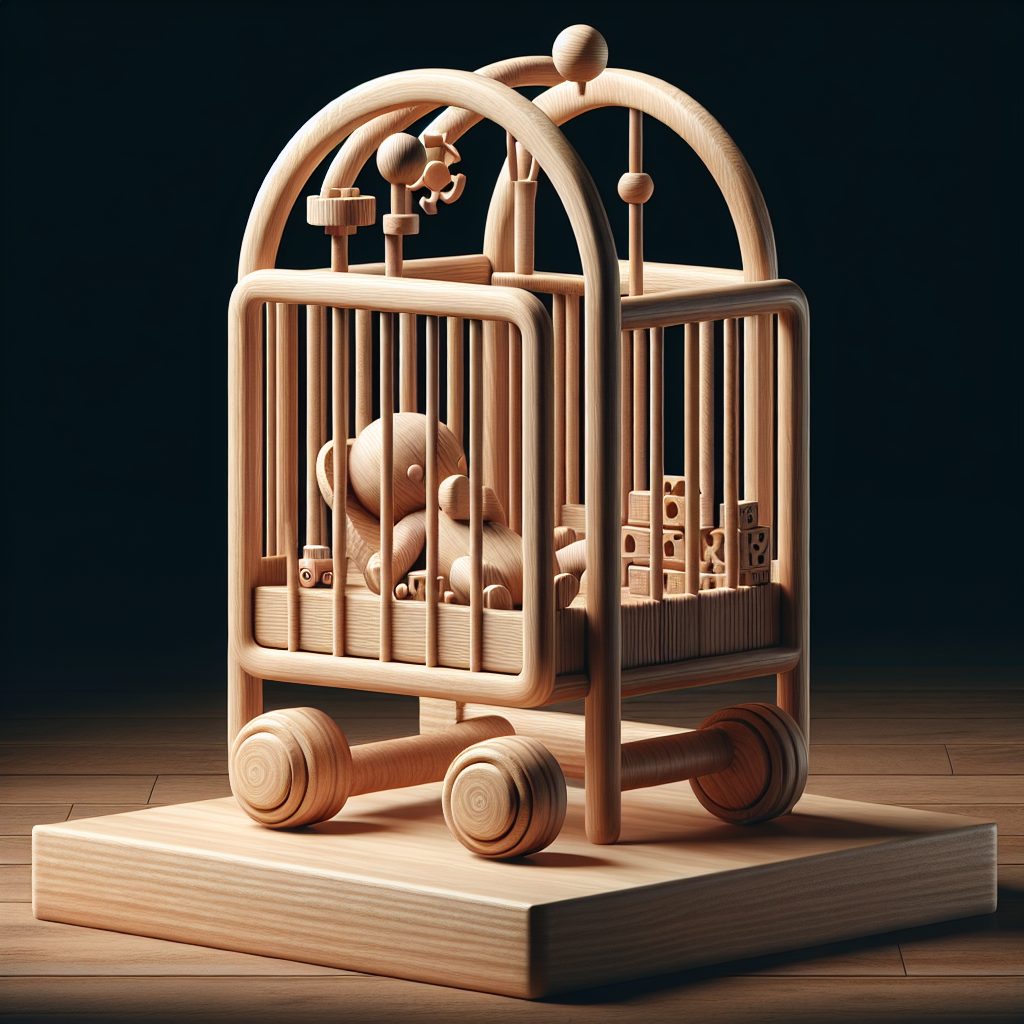Unfinished wood refers to wood that has not been treated with any type of finish, such as paint, stain, or varnish. This type of wood is often chosen for its natural and organic look, as well as its potential for customization. When it comes to babies and young children, the question arises: is unfinished wood safe for them? Unfinished wood can be a popular choice for baby furniture and toys due to its non-toxic nature and lack of harmful chemicals found in some finishes. However, there are important considerations to keep in mind when using unfinished wood around babies, including the potential for splinters and the need for regular cleaning to prevent the buildup of germs and bacteria.
One of the key benefits of using unfinished wood for baby items is its natural and eco-friendly properties. Unlike many finished wood products that contain harmful chemicals, unfinished wood is free from toxins that can be harmful to babies’ delicate skin and developing respiratory systems. Additionally, unfinished wood allows for a customizable and personalized touch, making it a popular choice for parents looking to create a natural and rustic aesthetic in their baby’s nursery. In the next section, we will discuss some key takeaways and considerations when choosing unfinished wood products for babies, including maintenance tips and safety precautions to keep in mind.
Key Takeaways
1. Unfinished wood can be safe for babies as long as it is properly sanded and smoothed to prevent splinters or jagged edges that could harm them.
2. Avoid using woods that are treated with toxic chemicals or paints, as these can be harmful if ingested or if a baby chews on the wood.
3. Regularly inspect wooden baby items for any signs of wear or damage, as this could increase the risk of splinters or other hazards.
4. Consider applying a non-toxic sealant to unfinished wood items to provide an extra layer of protection and prevent damage from spills or accidents.
5. Always supervise babies when they are playing with wooden toys or using wooden furniture to ensure their safety.
What are the Safety Implications of Using Unfinished Wood for Babies?
Chemical Exposure Risks
Unfinished wood may contain harmful chemicals such as formaldehyde, which can be hazardous to babies who may chew or gnaw on wooden toys or furniture. These chemicals can potentially be absorbed through the skin or ingested, leading to health concerns.
Splinter Risks
Unfinished wood can be rough and prone to splintering, posing a risk of injury to babies who may come into contact with it. Splinters can be sharp and cause cuts or puncture wounds, which can lead to infections if not properly addressed.
Bacterial Growth
Unfinished wood is porous and can harbor bacteria if not properly cleaned and maintained. Babies are more susceptible to infections and illnesses, so exposing them to bacteria on unfinished wood surfaces can be dangerous for their health.
Precautionary Measures
When using unfinished wood products for babies, it is essential to take precautions to ensure their safety. This includes sanding down rough edges to prevent splinters, sealing the wood with non-toxic finishes, and regularly cleaning and disinfecting the surfaces to minimize bacterial growth.
How Can You Ensure the Safety of Babies when Using Unfinished Wood?
- Choose unfinished wood products that are made from non-toxic materials.
- Sand down rough edges and surfaces to prevent splinters.
- Seal the wood with non-toxic finishes to minimize chemical exposure risks.
- Regularly clean and disinfect unfinished wood surfaces to prevent bacterial growth.
Frequently Asked Questions
Is unfinished wood safe for babies?
Yes, unfinished wood is generally safe for babies as long as it is well-sanded and free of any harmful chemicals. However, it’s important to keep an eye out for splinters or rough edges that could potentially harm your baby.
What are the benefits of using unfinished wood for baby furniture?
Unfinished wood is a natural and non-toxic option for baby furniture, making it a safe choice for your little one. It also allows you to customize the look of the furniture to your liking with paints or stains.
How can I ensure that unfinished wood furniture is safe for my baby?
Before using unfinished wood furniture for your baby, make sure to thoroughly sand down any rough edges or surfaces. You should also avoid furniture with sharp corners or pieces that could potentially pose a choking hazard.
Are there any potential risks associated with unfinished wood for babies?
While unfinished wood itself is safe for babies, there is always a risk of splinters or rough surfaces that could cause harm. It’s important to regularly inspect the furniture for any signs of wear and tear.
Can unfinished wood be treated to make it safer for babies?
Yes, you can treat unfinished wood with non-toxic sealants or finishes to create a smoother surface and protect it from any potential hazards. Just make sure to choose products that are safe for use around babies.
What should I look for when purchasing unfinished wood furniture for my baby?
When shopping for unfinished wood furniture for your baby, look for pieces that are made from high-quality, natural wood without any added chemicals or toxins. Check for smooth edges and surfaces to ensure the safety of your little one.
Final Thoughts
Overall, unfinished wood can be a safe and natural choice for baby furniture as long as proper precautions are taken to ensure its safety. By carefully inspecting the furniture for any potential hazards and making any necessary modifications, you can create a healthy and non-toxic environment for your baby to grow and play in.
Remember that every baby is different, so it’s important to always supervise your little one when they are around unfinished wood furniture to prevent any accidents. With the right care and attention, unfinished wood can be a beautiful and safe option for your baby’s nursery.
